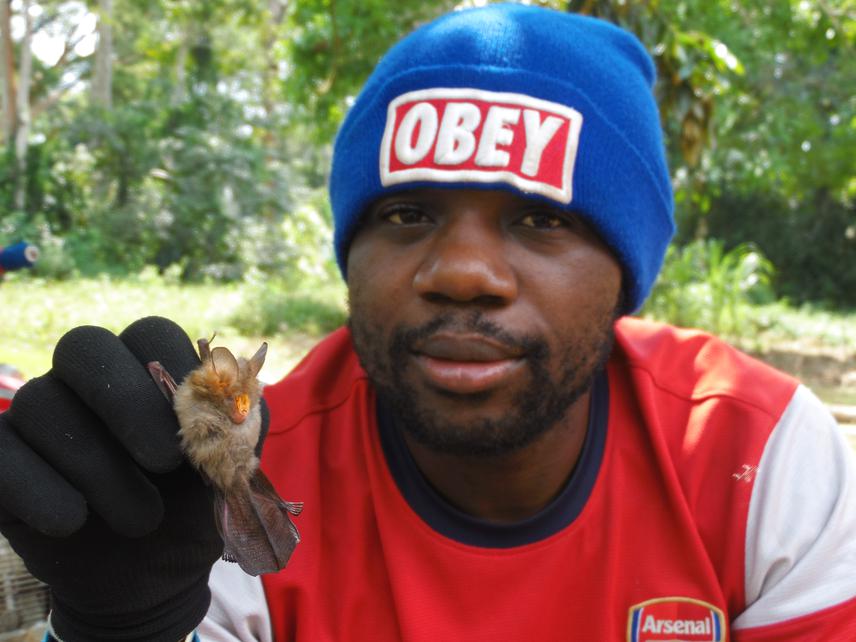Patrick Jules Atagana
Other projects
24 May 2018
Bat Community Response to Forest Loss and Habitat Conversion in Southern Cameroon I
The aim of this project is to evaluate the effects of habitat conversion on bat assemblages in the southern Cameroon. This project will centre on the Dja Biosphere Reserve, which is under threat due to human encroachment and deforestation. Bats will be captured using ground, canopy mist-nets and harp traps set in four different habitat and land types. The bat assemblages within these habitats and land types will provide base line data to predict future trends in the distribution and abundance of bat species in light of increasing deforestation and land use change in southern Cameroon.

Land use change is a key driver of biodiversity loss in terrestrial ecosystems (Jetz et al. 2007; Pereira et al. 2010) and a leading cause of species extinction (Frick et al, 2019). However, to assess the the extent to which land-use change is impacting tropical ecosystems there needs to be a clear understanding of what species are already present. In addition, a better understanding is needed of the impact of climate change on species distributions as the impact of shifting ranges and habitat loss could lead to significant challenges for long-term conservation efforts (Struebig et al. 2015). While there is increasing evidence that anthropogenic changes are significantly reducing habitat for bats (Gardner et al. 2009; Chazdon 2014) studies focusing on African species is rare (Gibson et al. 2011). Bats are essential in maintaining healthy, natural ecosystems and play an important role in many economic services (Fujita and Tuttle 1991). Bats are excellent ecological indicators of habitat disturbance due to a combination of their size, mobility, longevity, observable short and long-term effects, trends of populations, and their distribution around the globe (Kunz et al 2011; Fenton et al 1992). As part of the work carried out under our first Rufford grant, we were able to show that the diversity of bats decreases with disturbance at our field sites in Cameroon. We aim to expand this study to incorporate field sites in southern Cameroon to show that these trends are the same across the country.
The work is going to achieve the following: -Provide a species summary of the bat fauna found using different habitats in Southern Cameroon which can be compared to the distribution patterns of bats found in the north of the country; -Determine bats roosting and foraging habitats in Cameroon; - Analyse changes in species abundance and distribution across a land-use gradient in southern Cameroon. - Predict potential range shifts for the bat species found in southern Cameroon (including past, present and future models); - We will produce a series of recommendations’ will be handed to the authorities in charge of wildlife protection and will serve as a base for the elaboration of conservation strategies for these species.